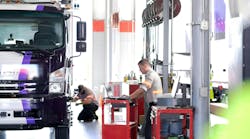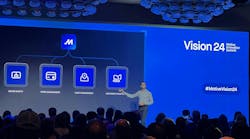A few years ago a growing, high-profile private fleet faced a labor crisis. Driver hourly rates and overtime costs were rising, while productivity was falling. For a private fleet running some 8-million miles a year to serve more then 67 stores, high labor costs represented “low hanging fruit” for a potential third-party carrier takeover.
“Our driver costs made our fleet ripe picking for outsourcing,” said one of the fleet managers. “We needed to take action — and quickly.”
The solution — which took nearly two years to fully implement — was Activity-Based Compensation (ABC). Productivity-based paychecks had arrived. All driver runs are governed by a standardized formula prescribing set minutes allowed. Pay is based on these minutes-per-run at the driver's individual hourly rate. While the old system paid at hourly rates only, ABC created built-in incentives for drivers to produce more work in less time, effectively increasing their hourly rate.
The new system is complex and should not be underestimated. It takes time, patience and repeated communication to implement, but the improvements realized were fairly dramatic: a 30% increase in driver productivity in the first year. Ninety-eight drivers are now doing the work of 120, and they're using eight fewer tractors. In terms of the bottom line, the company saves more than $1-million annually — $450,000 in reduced labor costs and a $650,000 reduction in equipment and maintenance, administrative and overtime expenses.
“A driver can now give himself a 20% raise by completing a 10-hour run in 8 hours, and have time left over in his shift to take on an ‘extra’ short run for more pay,” another manager points out.
Under the old system, the driver might have killed time at a truck stop waiting for the store dock to clear. Now he has the incentive to beat the standard at the yard and at the store. This often means preparing the area where his load is to be delivered, or eating at the store to save time and money. Company trucks are given priority over all other delivery trucks at each store.
Company drivers perform at 120% of ABC standards. A disciplinary process takes effect only if a driver regularly performs at less then 95% of standards; very few fall behind. Accident-rate frequency also dropped last year.
Using on-board technology is critical. Managers analyzed data on 3,000 trips to and from their stores to set the standards for the ABC program.
The company has a culture of open and trusting communication, which also helped win drivers over. At quarterly safety meetings, top management expresses its support for and appreciation of drivers. This sends the message that drivers are highly valued and a critical piece of the corporate success formula.
With trucks seen as “rolling billboards” for the company's products, drivers realize how critical they are to the brand's highly favorably public image.
Management expects a 25% growth in business over the next five years. This means about two-dozen new drivers will be added. References from incumbent drivers are key to recruiting new employee drivers. This shouldn't be a problem, since turnover is only 5%-6% a year.
The fleet has done an excellent job making drivers feel connected to the company. While Activity-Based Compensation is certainly a big factor, intangibles play a role as well. As one manager said, “Drivers know we count on them meeting…and exceeding…our high expectations.”
Gary Petty is President and CEO of the National Private Truck Council. The council's web site is www.nptc.org. His column appears monthly in FLEET OWNER.


